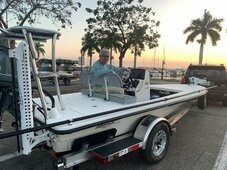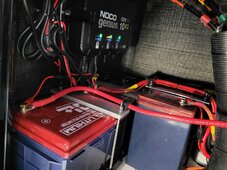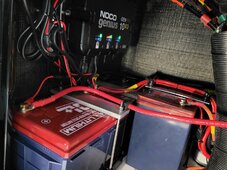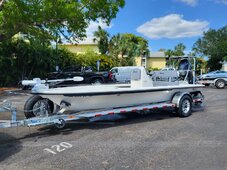tpenfield
New Member
Greetings,
A question for future considerations . . .
I am seeing a few so-called LiFePO4 'Starter' Batteries come on the market, claiming to be "plug 'n play", and I know some marine engine manufacturers are listing them as OK to use with engines (mostly outboard engines I believe) that have smart alternators.
I am wondering if/when these starter batteries would be appropriate for starting marine engines with dumb alternators? I have a boat with twin V8 sterndrive engines (Mercruiser 6.2L with all the fancy electronic controls - aka Digital Throttle & Shift, and Axius Joystick docking). I believe the alternators are of the 'dumb' variety . . .
As I understand it, there are a few issues to be concerned about . . .
I wonder if these 'starter' batteries really have the bases covered, or if you still need additional components to supplement their use as starter batteries for large/larger engines?
Anyway, not a concern for me right now, as I have new LA starter batteries in my boat, but something to consider for the future.
A question for future considerations . . .
I am seeing a few so-called LiFePO4 'Starter' Batteries come on the market, claiming to be "plug 'n play", and I know some marine engine manufacturers are listing them as OK to use with engines (mostly outboard engines I believe) that have smart alternators.
I am wondering if/when these starter batteries would be appropriate for starting marine engines with dumb alternators? I have a boat with twin V8 sterndrive engines (Mercruiser 6.2L with all the fancy electronic controls - aka Digital Throttle & Shift, and Axius Joystick docking). I believe the alternators are of the 'dumb' variety . . .
As I understand it, there are a few issues to be concerned about . . .
- Cranking amps (which instantaneously can be about 500 amps and then settle in at about 100-150 amps while cranking the engine.
- Bulk charging of the batteries placing excessive load on the dumb alternators.
- BMS shutoff of the charging when the LiFePO4 reaches full charge or otherwise goes into protection mode . . . causing the alternator to voltage spike.
I wonder if these 'starter' batteries really have the bases covered, or if you still need additional components to supplement their use as starter batteries for large/larger engines?
Anyway, not a concern for me right now, as I have new LA starter batteries in my boat, but something to consider for the future.






